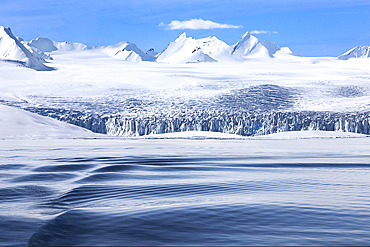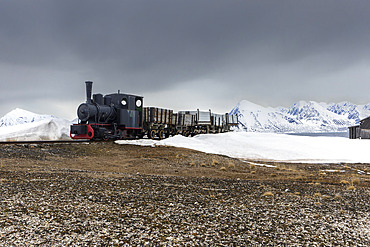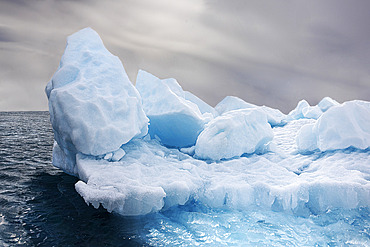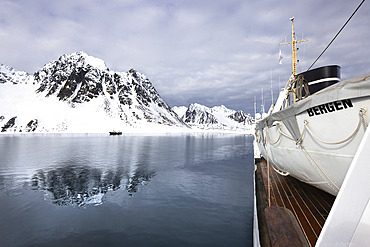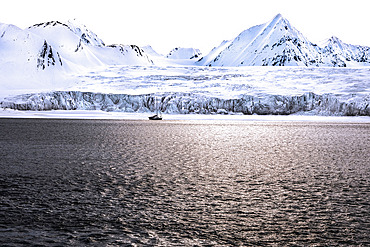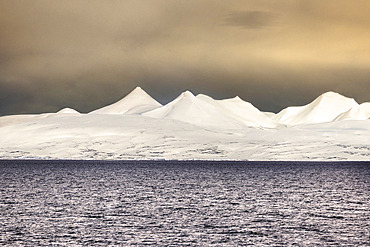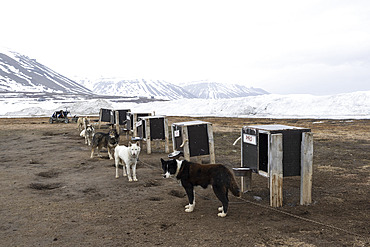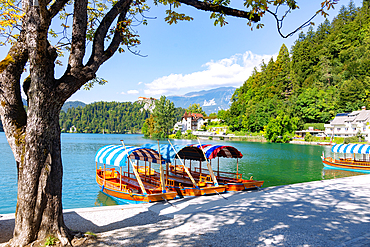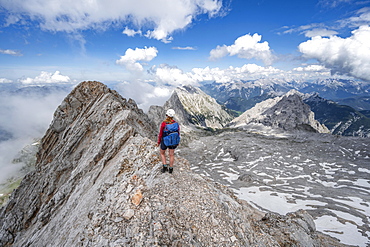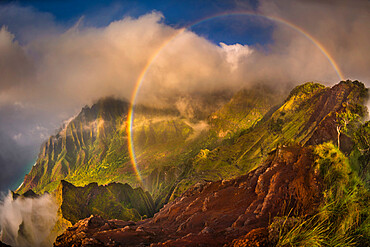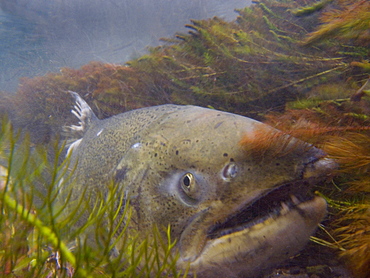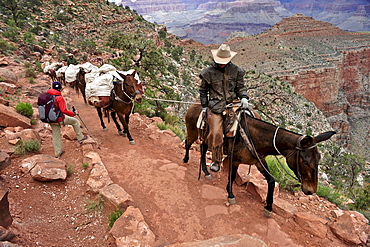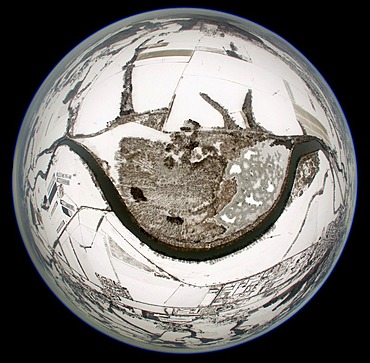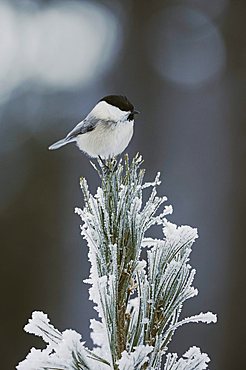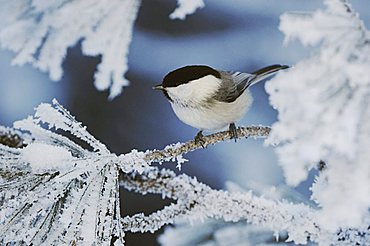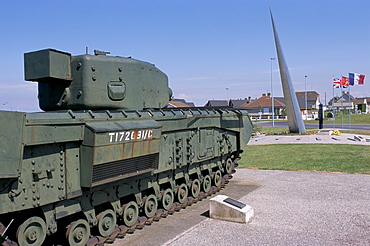Recent searches
Loading...
860-292394 - Landscape of Svalbard in Norway, also known as Spitsbergen. This territory stretches from latitude 75 to 80 degrees to the pack ice a few hundred kilometers from the North Pole. Melting ice, early global warming. Front of a glacier fracturing at the edge of a fjord.
860-292393 - Landscape of Svalbard in Norway, also known as Spitsbergen. This territory stretches from latitude 75 to 80 degrees to the pack ice a few hundred kilometers from the North Pole. Melting ice, early global warming. Baie de la Madeleine here, a coastal landscape rising to 80 degrees latitude, where blocks of ice and small icebergs detached from glaciers drift on the water. Old steam train in front of Ny-Alesund weather station
860-292392 - Landscape of Svalbard in Norway, also known as Spitsbergen. This territory stretches from latitude 75 to 80 degrees to the pack ice a few hundred kilometers from the North Pole. Melting ice, premature global warming. Exploration boat in Baie de la Madeleine.
860-292391 - Landscape of Svalbard in Norway, also known as Spitsbergen. This territory stretches from latitude 75 to 80 degrees to the pack ice a few hundred kilometers from the North Pole. Melting ice, early global warming. Coastal scenery as you climb towards latitude 80 degrees. Trapper's hut, professional hunter's hut
860-292390 - Landscape of Svalbard in Norway, also known as Spitsbergen. This territory stretches from latitude 75 to 80 degrees to the pack ice a few hundred kilometers from the North Pole. melting ice, early global warming. Baie de la Madeleine, a coastal landscape rising towards latitude 80 degrees, where blocks of ice and small icebergs detached from glaciers drift on the water.
860-292388 - Landscape of Svalbard in Norway, also known as Spitsbergen. This territory stretches from latitude 75 to 80 degrees to the pack ice a few hundred kilometers from the North Pole. Melting ice, premature global warming. Exploration boat in Madeleine Bay. Young explorer on deck.
860-292389 - Landscape of Svalbard in Norway, also known as Spitsbergen. This territory stretches from latitude 75 to 80 degrees to the pack ice a few hundred kilometers from the North Pole. Melting ice, premature global warming. Exploration boat in Magdalen Bay. Explorer sailboat.
860-292387 - Landscape of Svalbard in Norway, also known as Spitsbergen. This territory stretches from latitude 75 to 80 degrees to the pack ice a few hundred kilometers from the North Pole. Melting ice, early global warming. Front of a glacier fracturing at the edge of a fjord. Explorers' sailboat at the ice edge
860-292386 - Landscape of Svalbard in Norway, also known as Spitsbergen. This territory stretches from latitude 75 to 80 degrees to the pack ice a few hundred kilometers from the North Pole. Melting ice, early global warming.
860-292340 - Dogsledding. Landscape of Svalbard in Norway, also known as Spitsbergen. This territory stretches from latitude 75 to 80 degrees to the pack ice a few hundred kilometers from the North Pole.
860-292339 - Landscape of Svalbard in Norway, also known as Spitsbergen. This territory stretches from latitude 75 to 80 degrees to the pack ice a few hundred kilometers from the North Pole.
860-292338 - Aerial view over the snow-covered peaks of Svalbard. pointed peak known as spitzberg. latitude from 75 to 80 degrees, down to the pack ice near the north pole.
832-403857 - Adult male getting his temperature checked
832-402188 - Happy graduated adult man wearing a bachelor gown and a black mortarboard and showing his diploma while looking at camera
832-402189 - Happy graduated man in a black gown jumping while holding his diploma
832-402033 - Symbolic image, global warming, thermometer, sun, heat wave, 38 degrees Celsius, Baden-Wuerttemberg, Germany, Europe
1243-445 - Aerial drone 180 degree panoramic view of Falesia cliffs, Vilamoura, Algarve, Portugal, Europe
832-396866 - Round thermometer showing over 110 degrees
1113-107613 - bled, Lake Bled, Bleyski degrees, Pletna rowing boats
1113-107612 - bled, Lake Bled, Bleyski degrees, Pletna rowing boats, Parish Church of Sveti Martin
832-394654 - Hiker at the Wettersteingrad, Patenkirchner Dreitorspitze, Wetterstein Mountains, Garmisch-Partenkirchen, Bavaria, Germany, Europe
832-394653 - Hiker at the Wettersteingrad, Patenkirchner Dreitorspitze, Wetterstein Mountains, Garmisch-Partenkirchen, Bavaria, Germany, Europe
832-394185 - Straight, snow-covered road leading towards a mountain, winter landscape, Lomagnupur, Skeioararsandur, South Iceland, Iceland, Europe
832-391463 - Red ribbon wrapped diploma resting on american flag with copy space
832-391465 - Graduation cap with tassel and red ribbon wrapped diploma resting on american flag
1337-32 - A 180 degree rainbow formed by the clouds over the Kalalau Valley on Kauai's west coast in the evening, Napali Coast State Wilderness Park, Kauai, Hawaii, United States of America, Pacific
832-389763 - Clinical thermometer, mercury thermometer, Germany, Europe
832-389762 - Clinical thermometer, mercury thermometer, Germany, Europe
832-389190 - Rugged mountain peaks, degree of the Grosser Moeseler with glacier Furtschaglkees, snow-covered mountains, high alpine landscape in fog, Berliner Hoehenweg, Zillertaler Alps, Zillertal, Tyrol, Austria, Europe
832-385135 - Shield, 100 degrees Celsius, warns of boiling hot water, geothermal area Reykjadalur, Hverageroi, Hveragerdi, Iceland, Europe
1318-36 - 180 degree panorama of the Northen Lights (Aurora Borealis) over the ocean, Nunavut and Northwest Territories, Canada, North America
1116-44974 - Portrait Of A Bald Eagle Puffed Up At 25 Degrees Below Zero, Homer, Kenai Peninsula, Southcentral Alaska
1216-420 - At 68 Degrees North, a couple consider Arctic Winter landscape of Lofoten, Nordland, Norway, Europe
741-5701 - Tourists on inflatable boats exploring the Polar Ice Cap, 81 degrees, north of Spitsbergen, Svalbard, Arctic, Norway, Europe
741-5697 - A view of the melting sea ice on the Arctic Ocean at 81 degrees, north of the Svalbard islands, Arctic, Norway, Europe
741-5700 - Polar bear (Ursus maritimus), Polar Ice Cap, 81 degrees, north of Spitsbergen, Arctic, Norway, Europe
741-5699 - Polar bear (Ursus maritimus), Polar Ice Cap, 81 degrees, north of Spitsbergen, Arctic, Norway, Europe
741-5698 - Polar bear (Ursus maritimus), Polar Ice Cap, 81 degrees, north of Spitsbergen, Arctic, Norway, Europe
832-379139 - 360 degree panorama of volcano Pico Verde, Masca Gorge, Teno mountains, volcano Pico del Teide, Tenerife, Canary Islands, Spain, Europe
1267-95 - The Senate House of the University of Cambridge, used mainly for degree ceremonies, Cambridge, Cambridgeshire, England, United Kingdom, Europe
1225-129 - Mountainous Panjshir Valley which endures six-month winters during which temperatures can reach twenty degrees Celsius below zero, Afghanistan, Asia
724-2517 - Infinity Tower features 495 apartments in a helical shape that swivels 90 degrees from the base to the top, Marina district, Dubai, United Arab Emirates, Middle East
857-91073 - November 7, 2008 Mt Shasta CA A spawned-out Chinook salmon watches over her redd in the Shasta River where it runs through Big Springs Ranch about 2 miles north of the town of Mt Shasta. The ranch, which is contributing to degraded habitat conditions, which actually warm water tempt by upwards of 10 degrees as the river passes through the ranch and then spills into the Klameth, is currently under contract for purchase by TNC, therefor TNC and partner organizations have been allowed to research this stretch of river for the first time. They have discovered that is it a very fertile juvenile rearing area and that there are a surprising number of returning salmon in spite of habitat degraded by grazing cattle (often in the river) and irrigation practices. If this purchase is successful, TNC has the chance to improve a large stretch of habitat and quickly improve conditions that will effect numbers of returning fish and habitat in the Shasta and Klameth Rivers. In California, The Nature Conservancy is focusing its efforts on protecting the Shasta River and its tributaries, which create one of the most important spawning nurseries for Chinook salmon in the entire Klamath Basin, United States of America
857-91078 - November 12, 2008 Mt Shasta and the Shasta River, Big Springs ranch, CA Carson Jeffres Staff Research Associate for UC Davis Center for watershed Sciences, conducting research in the Shasta River where it runs through Big Springs Ranch about 20 miles north of the town of Mt Shasta. The Shasta River and its tributaries create one of the most important spawning nurseries for Chinook salmon in the entire Klamath Basin. The ranch is contributing to degraded habitat conditions, which actually warm water temps by upwards of 10 degrees as the river passes through the ranch and then spills into the Klameth River.This stretch of river is a very fertile juvenile salmon rearing area and that there are a surprising number of returning salmon in spite of habitat degraded by grazing cattle and bad irrigation practices, United States of America
857-91077 - November 12, 2008 Mt Shasta CA, Big Springs ranch Carson Jeffres (rt) Staff Research Associate for UC Davis Center for watershed Sciences, and Andrew Nichols, Jr Specialist (UC Davis Center for watershed Sciences,) conducting research in the Shasta River where it runs through Big Springs Ranch about 20 miles north of the town of Mt Shasta. The ranch, which is contributing to degraded habitat conditions that warm water temps by upwards of 10 degrees as the river passes through the ranch and then spills into the Klameth, is currently under contract for purchase by TNC, therefor TNC and partner organizations have been allowed to research this stretch of river for the first time. They have discovered that is it a very fertile juvenile rearing area and that there are a surprising number of returning salmon in spite of habitat degrated by grazing cattle (often in the river) and irrigation practices. If this purchase is sucessful, TNC has the chance to improve a large stretch of habitiat and qucikly improve conditions that will effect numbers of returning fish and habitiat in the Shasta and Klameth Rivers. The Shasta River and its tributaries create one of the most important spawning nurseries for Chinook salmon in the entire Klamath Basin, United States of America
857-91080 - November 12, 2008 Mt Shasta CA, Big Springs ranch The Shasta River as it runs through Big Springs Ranch about 20 miles north of the town of Mt Shasta. The Shasta River and its tributaries create one of the most important spawning nurseries for Chinook salmon in the entire Klamath Basin. The ranch is contributing to degraded habitat conditions, which actually warm water temps by upwards of 10 degrees as the river passes through the ranch and then spills into the Klameth River.This stretch of river is a very fertile juvenile salmon rearing area and that there are a surprising number of returning salmon in spite of habitat degraded by grazing cattle and bad irrigation practices, United States of America
857-91084 - Mt Shasta CA, Big Spring Ranch Bill Chesney from the CA Dept of Fish & Game counting redds in a stretch of river that is heavily grazed by cattle who have full access to the river and often drink and eat in it. Mt Shasta in the background. The Shasta River runs through Big Springs Ranch about 20 miles north of the town of Mt Shasta. The ranch, which is contributing to degraded habitat conditions, and actually warming water temps by upwards of 10 degrees as the river passes through the ranch and then spills into the Klameth, is currently under contract for purchase by TNC. Since the contract began, TNC and partner organizations have been allowed to research this stretch of river for the first time. They have discovered that is it a very fertile juvenile rearing area and that there are a surprising number of returning salmon in spite of habitat degradation by grazing cattle (often in the river) and irrigation practices. If this purchase is successful, TNC has the chance to improve a large stretch of habitat and quickly improve conditions that will effect numbers of returning fish and habitat in the Shasta and Klameth Rivers. The Shasta River and its tributaries create one of the most important spawning nurseries for Chinook salmon in the entire Klamath Basin, United States of America
857-91074 - November 7, 2008 Mt Shasta CA A spawned-out Chinook salmon watches over her redd in the Shasta River where it runs through Big Springs Ranch about 2 miles north of the town of Mt Shasta. The ranch, which is contributing to degraded habitat conditions, which actually warm water tempt by upwards of 10 degrees as the river passes through the ranch and then spills into the Klameth, is currently under contract for purchase by TNC, therefor TNC and partner organizations have been allowed to research this stretch of river for the first time. They have discovered that is it a very fertile juvenile rearing area and that there are a surprising number of returning salmon in spite of habitat degraded by grazing cattle (often in the river) and irrigation practices. If this purchase is successful, TNC has the chance to improve a large stretch of habitat and quickly improve conditions that will effect numbers of returning fish and habitat in the Shasta and Klameth Rivers. In California, The Nature Conservancy is focusing its efforts on protecting the Shasta River and its tributaries, which create one of the most important spawning nurseries for Chinook salmon in the entire Klamath Basin, United States of America
857-89692 - Female hiker waits for pack horses to pass on the South Kaibab Trail in Grand Canyon National Park north of Williams, Arizona May 2011. The South Kaibab Trail starts on the south rim of the Colorado Plateau and follows a ridge out to Skeleton Point allowing for 360-degree views of the canyon then down to the Colorado River. At the Colorado River the trail connects with the North Kaibab trail as part of the Arizona Trail system, that crosses the state of Arizona from Mexico to Utah.
911-10652 - Rotten sea ice at over 80 degrees North off the north coast of Svalbard. Climate change is causing sea ice to retreat rapidly. The latest science predicts that the Arctic will be completely ice free in the summer around 2054. The sea ice broke up very early around Svalbard in 2013.
911-10653 - Rotten sea ice at over 80 degrees North off the north coast of Svalbard. Climate change is causing sea ice to retreat rapidly. The latest science predicts that the Arctic will be completely ice free in the summer around 2054. The sea ice broke up very early around Svalbard in 2013.
911-10598 - The Russian research vessel, AkademiK Sergey Vavilov an ice strengthened ship on an expedition cruise to Northern Svalbard, with clients on the prow at over 80 degrees north in rotten sea ice, some 550 miles from the North Pole. Latest research shows the Arctic will be ice free in the summer by around 2054.
911-10044 - Women constructing solar cookers at the Barefoot College in Tilonia, Rajasthan, India, demonstrate how hot the device is, by holding a sheet of newspaper which instantly sets on fire in the 300 degree Celcius heat. The Barefoot College is a worldwide charity, founded by Bunker Roy, its aims are, education, drinking water, electrification through solar power, skill development, health, women empowerment and the upliftment of rural people. The use of the cookers, vastly reduces the amount of fire wood women have to go out and collect from the forest.
869-5267 - frozen river and riverside with trees in winter at 30 degrees celsius below zero Sweden Scandinavia Europe
832-376980 - 360° view from Seekarlscharte Mountain with Gruba Lake and bizarre clouds in the sky over the Rofan Mountains, Achensee, Tyrol, Austria, Europe
832-376982 - 360 ° panorama of the Pico Viejo volcano and Pico del Teide mountain with a woman standing at the edge of a crater, Teide National Park, Tenerife, Canary Islands, Spain, Europe
832-377022 - 360 degree view of Union Square Park, San Francisco, California, USA
832-350399 - Pagoda, Choeung Ek, Killing Fields, Cambodia, Asia
832-332766 - 360-degree panoramic view of Frankfurt's skyline and pedestrian bridge "Eiserner Steg", Frankfurt, Hesse, Germany
832-332767 - 360-degree panoramic view of Frankfurt's skyline and pedestrian bridge "Eiserner Steg", Frankfurt, Hesse, Germany
832-360296 - Cathedral in Fulda, panoramic picture, small planet, 360 degrees, Hesse, Germany, Europa
832-360305 - 360 degree panoramic view of city hall and Jungfernstieg Street in Hamburg, Germany
832-236426 - 360 degree panoramic view of the city and the colorfully painted houses of Burano, Venice, Italy, Europe
832-223931 - Hauptmarkt main square with the Frauenkirche Church of Our Lady, 180 degree panorama, Nuremberg, Franconia, Bavaria, Germany, Europe
832-215348 - 360 degree panoramic view Hauptbahnhof main train station, Berlin, Germany, Europe
832-215346 - 360 degree panoramic view Hauptbahnhof main train station, Berlin, Germany, Europe
832-215347 - 360 degree panoramic view Hauptbahnhof main train station, Berlin, Germany, Europe
832-205033 - Light installation 47, 16 degrees north by Peter Sandbichler, Sparkassenplatz Passage, Innsbruck, Tyrol, Austria, Europe
832-156648 - Aerial view, fisheye, Ruhr river, Warmen water works, waterworks Hamm, Waldemey, Froendenberg, Ruhrgebiet area, North Rhine-Westphalia, Germany, Europe
832-156651 - Aerial view, fisheye, Ruhr river, Hohenheide, Froendenberg, Ruhrgebiet area, North Rhine-Westphalia, Germany, Europe
832-131392 - Planet projection, 360 degree panorama, Oderbruch region, Mecklenburg-Western Pomerania, Germany, Europe
832-125608 - Column made of nickel and steel, twisted by 360 degrees, exhibition in the smaller house of the Villa Huegel mansion, Baldeney district, Essen, North Rhine-Westphalia, Germany, Europe
832-110950 - Pebbles Bar, the futuristic 360-degree bar of the Hyatt Hotel on the Hafenspitze, Medienhafen harbour, Duesseldorf, North Rhine-Westphalia, Germany, Europe
832-110949 - Pebbles Bar, the futuristic 360-degree bar of the Hyatt Hotel on the Hafenspitze, Medienhafen harbour, Duesseldorf, North Rhine-Westphalia, Germany, Europe
832-88776 - 360 degree panorama of the Phaeno Science Museum in Wolfsburg, Lower Saxony, Germany, Europe
832-88420 - 360 degree panoramic photo of the FV-617 scenic road, Fuerteventura, Canary Islands, Spain, Europe
832-76934 - 360 degree mountain panorama in the Wettersteingebirge mountains, Mt. Suedwand on the Suedwandstieg trail with view on the Wettersteinmassiv mountains in Leutasch, Tyrol, Austria, Europe
832-69408 - Aerial view, fisheye, motorway junction of the A45 Sauerlandlinie and the A4 autobahns, Soest, Sauerland, North Rhine-Westphalia, Germany, Europe
832-69272 - Aerial view, fisheye shot, EON Datteln 4 Power Station, Dortmund-Ems Canal, Datteln, Ruhr Area, North Rhine-Westphalia, Germany, Europe
832-69358 - Aerial view, fisheye, Biggetalsperre reservoir, Attendorn, Hochsauerland, Sauerland, North Rhine-Westphalia, Germany, Europe
832-78575 - 360 degree panoramic photo of the FV-617 scenic road, Fuerteventura, Canary Islands, Spain, Europe
832-69271 - Aerial view, fisheye shot, EON Datteln 4 Power Station, Dortmund-Ems Canal, Datteln, Ruhr Area, North Rhine-Westphalia, Germany, Europe
1113-47195 - University of Al Qaraouine or Al Qarawiyyin, Kairouaine mosque, oldest continuously operating academic degree grantine university in the world, Fes, Morocco, Africa
857-67486 - A 360 degree view from the Portland Observatory in Portland, Maine. Built in 1807, the Observatory offers excellent views of Portland, Casco Bay and the White Mountains of New Hampshire. This picture was made with a panoramic camera that rotates as it exposes film.
857-77926 - White Rocks campsite on Aconcagua 360 degree panorama
857-67896 - A 360 degree view from the middle of a four corner intersection in Farmington, Maine. This picture was taken with a panoramic camera that rotates as it exposes the film.
857-54638 - A female skier drops into the 60 degree entrance of Once is Enough Couloir in the Jackson Hole Mountain Resort backcountry, Wyoming.
857-34264 - A young Inuit boy climbs out of an igloo in Northwestern Greenland. Many of the Inuit who live in this polar region still live a subsistence hunting lifestyle and practice ice age old traditions. Winter temperatures hover between -20 and -50 Degrees Fahrenheit in this extreme environment.
857-31918 - Jereme Monteau trains on a trail run in searing 125-degree heat in Death Valley National Park, CA.
857-13721 - Completely sealed technician sprays water heated to 180 degrees to decontaminate a cask emptied of fuel. Savanah River Site, South Carolina.
832-29717 - 360° tunnel panorama of the Kleiner Ahornboden wooded area in the Karwendel, Tyrol, Austria, Europe
917-169 - Inshore Pantropical Spotted Dolphin, Stenella attenuata graffmani, mother & calf porpoising, Costa Rica, Pacific Ocean. Adults of this subspecies display a much greater degree of spotting than their offshore counterparts, youngsters have little or no spotting.
917-168 - Inshore Pantropical Spotted Dolphins, Stenella attenuata graffmani, surfacing, Costa Rica, Pacific Ocean. This subspecies displays a much greater degree of spotting than its offshore counterpart.
979-1919 - An adult kelp gull (Larus dominicanus) in flight near the Antarctic peninsula in the southern ocean. This is the only gull regularly found in the Antarctic peninsula to a latitude of 68 degrees south.
627-1159 - The solar furnace that can reach temperatures up to 3500 degrees C (6330 degrees F) at Odeillo in the Pyrenees-Orientales, France, Europe
832-8248 - Willow Tit (Parus montanus), adult on frost covered Swiss Stone Pine (Pinus cembra) at minus 15 degrees Celsius, St. Moritz, Grisson, Alps, Switzerland, Europe
832-8247 - Willow Tit (Parus montanus), adult on frost covered Swiss Stone Pine (Pinus cembra) at minus 15 degrees Celsius, St. Moritz, Grisson, Alps, Switzerland, Europe
197-1042 - Minus 35 degrees and blowing, Antarctica *** Local Caption ***
755-46 - Panorama compiled from six images, giving a 270 degree view of the Golden Temple (Hiranyavarna Mahavihara) (Golden Monastery) in Patan, Kathmandu, Nepal, Asia
665-4795 - Churchill tank and monument 41 degrees RMC from D-Day in the Second World War, Lion sur Mer, Calvados, Normandy, France, Europe
